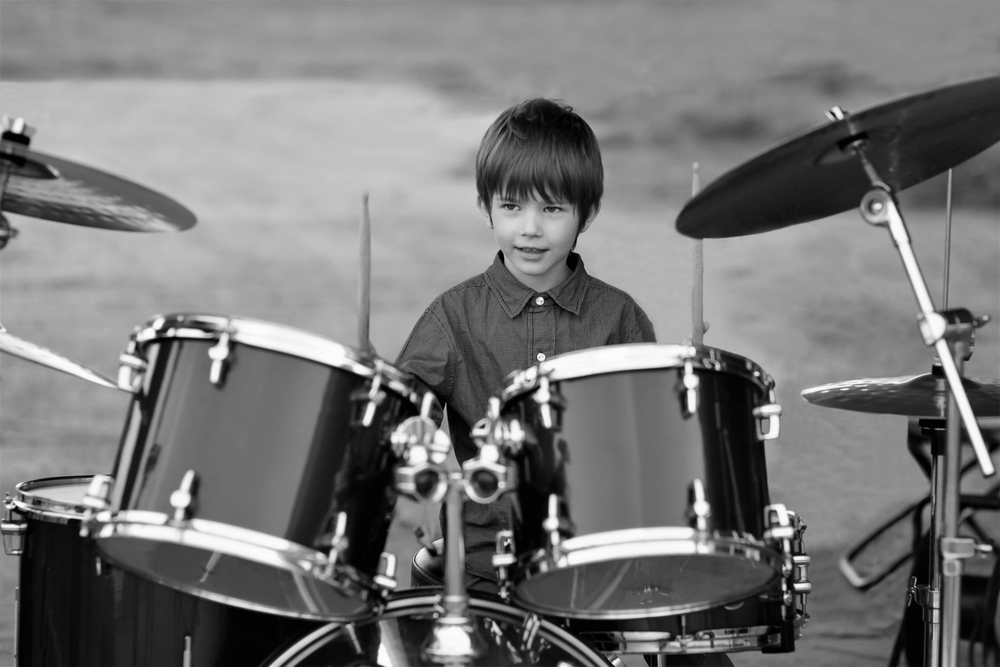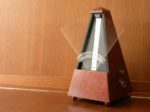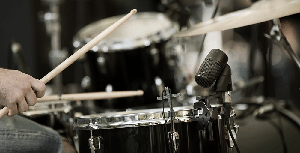
Hindsight is a wonderful thing.
Most musicians, myself included, spend a large portion of their youth practicing and playing music.
We devote a lot of time and effort learning things that at the time we think are incredibly useful. But the problem is that as children or teenagers, we don’t really know which skills will be most useful in the real world of the gigging musician. What’s more, our tastes change and we might not be interested in the same music in our adult years as we were in our youth.
This article will explore my personal experience with learning the drum kit in my younger years.
While I understand that learning the following tips was something that I had to do for myself to fully understand their importance, I wish that I had learned them sooner. My hope is that these tips will be valuable to you, and help make you a better, more rounded musician.
1. Practice
Learning an instrument doesn’t just require a lot of practice, it requires a specific type of practice.
As children this is one of the most difficult things to understand. In our youth (at least in my experience) we see practice as a binary state, you’re either practicing or you’re not practicing.
The following tips were lessons I had to learn and techniques I wish I had adopted earlier in life.
Don’t just play, practice too.
While I’ve always practiced to an extent, most of the time spent on my drum kit used to be spent simply playing, or messing around with material that I could already play. While improvising is an incredibly important part of a drummers repertoire, I’ve learned that practicing new material, mastering new coordination, rudiments, time signatures, styles of music, or simply increasing speed or sense of pulse by focused practice is equally important.
Focus
I’ve been guilty of switching off while practicing and simply “going through the motions,” which prevents me from thinking critically and making any real improvement.
I’ve learned that 30 minutes of focused, detailed practice with an end goal is more valuable than 2 hours of unfocused playing.
Set Targets
At university, I started keeping a practice diary so I knew exactly what I was working on the day before and could plan my practice accordingly. It’s important to set short, medium, and long term targets.
Short term targets could be something like “learn x groove at y tempo” and should be what you aim to achieve in any given practice session.
Medium term targets could be what you aim to be able to play after a week or month of reaching short term targets, eg. play any permutation of bass drum 8th-notes while playing an 8th-note hi-hat groove.
Long term targets are your end goal, eg. play and improvise 8th-note rock grooves comfortably.
Prior to thinking of practice this way, I found that I was practicing without a real goal and just spending a few minutes on one idea before moving on to another. Of course this means that I wasn’t spending the required amount of time to improve whatever I was practicing.
Be Critical
Too much of my youth was spent indulging myself by playing things that I thought I was good at. The problem with this is that I never practiced anything new, and actually I wasn’t as good as I thought I was anyway. It’s incredibly important to be critical of your own playing.
Your parents, friends, and teachers are allowed to praise you and tell you how well you’re doing, but don’t let that go to your head. While encouragement is incredibly positive, you need to remain level headed and think about what exactly can be improved in your own playing. Even the most simple piece of technique can always be improved by thinking critically about your time, feel, articulation, dynamics, etc.
Know when to play.
A lot of instrumentalists, especially drummers and guitarists though not exclusively, love to play as many notes as possible as quickly as possible. It’s a habit that many musicians, myself included, have to grow out of as it usually isn’t the most musical way to contribute to an ensemble. Sometimes it’s more appropriate to the music to play a minimal part, or not to play at all. The contrast in textures that we can create in an ensemble can be an interesting area to explore, and often makes the loud, busy moments more satisfying, both from the musician’s perspective and that of the audience.
Play slowly.
As any musician, I spent large periods of time trying to master difficult pieces of music. I’d try, and try, and try again, until I could finally play what I was working on. It could take me days, weeks or months but I’d get there through perseverance. While this perseverance is a useful trait for a musician to have, I now know that I could have accelerated this process by attempting everything at a dramatically reduced tempo.
Once a piece of technique is completely mastered slowly, increasing the tempo is relatively easy.
In my case I learned that playing slowly was beneficial, but I used to make the mistake of playing things slowly and unevenly. It’s vital that we learn to play things slowly and with a steady, consistent pulse.
Add dynamics.
Drummers tend to love noise. I was no exception, and I used to love hammering the life out of my drums. While this is appropriate for certain styles of music, learning to play this way can be extremely restricting (as I learned). Certain styles of music require a much lighter touch and the ability to vary dynamics from a soft whisper, to a loud roar in the same piece of music.
After all, loud only exists if quiet exists alongside it.
If we just play one dynamic, there’s nothing to compare it to, so how do we really know if it’s loud or soft?
Get creative/add depth to your practice.
Try to take whatever you’re practicing in as many different directions as possible. Vary the tempo, vary dynamics, displace the pattern, add accents or ghost notes, vary the articulation, etc. Doing all of this will give more mileage to the techniques you’re practicing and you’ll discover a wider array of possible applications.
2. Open Your Mind
As a child, and still to this day, I loved rock music. The difference between now and back then however, is that I’m now open minded to other styles of music and am able to play different styles fluently. As a teenager, if the music didn’t have a backbeat, I wasn’t interested.
While it’s completely understandable to be more attracted to accessible music, it’s important to be open minded to all styles, after all as a gigging drummer, you’re expected to be able to play a wide array of styles with fluency and a degree of authenticity.
3. Actively listen to music
Rather than just having music on in the background, it’s important to listen analytically to anything your listening to. Of course, don’t do this all the time as you’ll never be able to simply enjoy music, but a large proportion of your listening time should be devoted to analysing the different aspects of the music. This could be the overall musical elements such as form or tempo, to the drum specific elements such as the specific groove or articulation used be the drummer.
4. Go beyond the book
As musicians, a lot of what we learn comes from books. Books are an incredibly useful resource as they are timeless, they aren’t susceptible to changes in technology and most don’t age badly. However one mistake that I’ve made in numerous occasions is not listening to the music that inspired the book in the first place. When learning a new style of music, a book simply isn’t sufficient and one must listen to the music itself. It could be that the music is played in such a way that can’t be detailed with western notation (this could be to do with the articulation of each note or the rhythmic emphasis). It’s also very important that you’re learning repertoire. I found that my repertoire (the amount of songs I knew) was very limited because I didn’t actively search for the music that inspired the books I was practicing.
Final thoughts
Of course I can’t turn back time and unmake all these mistakes (and probably more besides). What I can do however, is use these experiences to make sure that I don’t make the same mistakes again. We all have to make mistakes to improve as people and musicians and I’m sure I will continue to do so in the future. The important thing is that I learn from them and that they ultimately make me a better musician.
I hope these tips improve the way you approach your instrument. This is by no means an exhaustive list and you’ll probably make mistakes that I haven’t mentioned, or not make the ones that I have. Just make sure you learn from them.
Ready to learn music?
Start learning with our 30-day free trial! Try our music courses!
About Liberty Park Music
LPM is an online music school. We teach a variety of instruments and styles, including classical and jazz guitar, piano, drums, and music theory. We offer high-quality music lessons designed by accredited teachers from around the world. Our growing database of over 350 lessons come with many features—self-assessments, live chats, quizzes etc. Learn music with LPM, anytime, anywhere!











It really helped when you said that I should try to analyze the different aspects of music while listening to it. I often just focus on the drum parts of the song, but I guess I should try and observe every other element in it. Once I am able to do so, I’ll be sure to enroll in private drummer lessons.
Hi Zoe,
I’m so glad you found this helpful!
All the best
Brendan